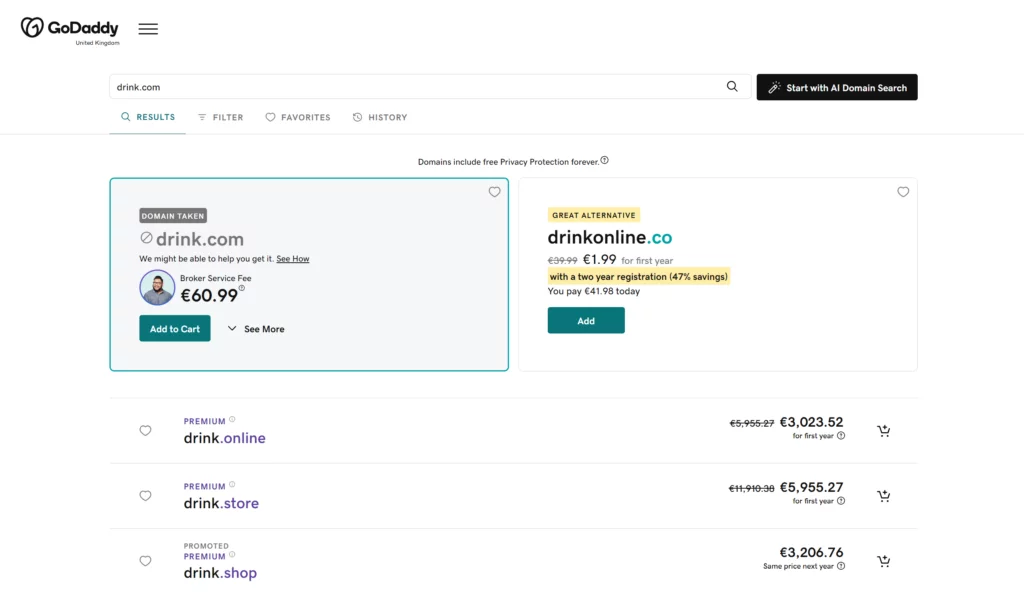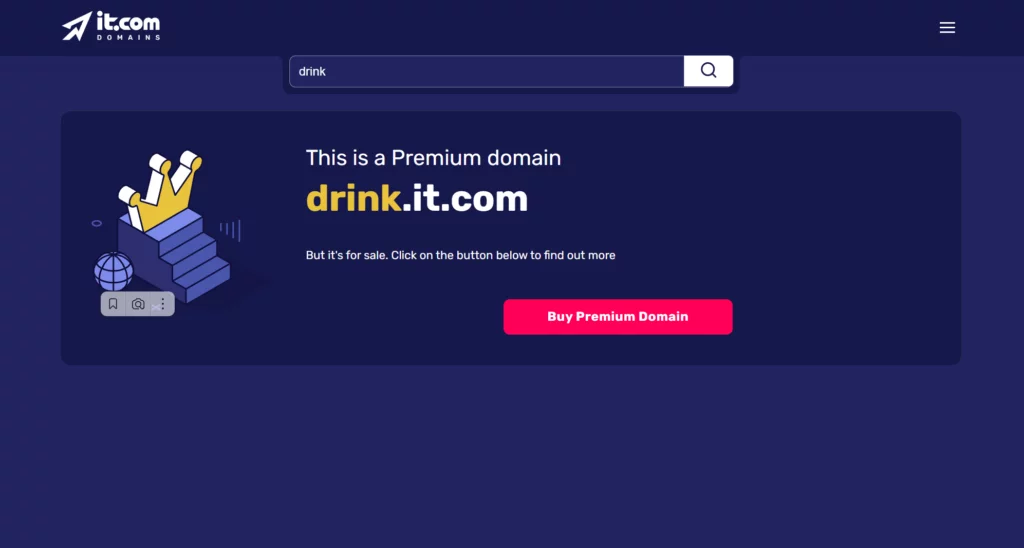How to Create a Unique Name with a Domain Hack
- by Ilona K.

Table of contents
When encountered for the first time, the ‘domain hack’ term naturally reminds of cyber attacks and domain theft. In fact, a domain hack involves cleverly using the elements of a domain name and zone to create a unique and memorable web address. Let’s talk about what domain hacks are, how they are used, and what benefits they can bring to your business.
A domain name is a key element of all websites. It should be easy to remember, easy to write, and reflect your brand or business direction. Domain hacks can help with all of these by creating a short and unusual domain that stands out from other website names.
What is a domain hack?
There were over 174 million domain names registered in .com and .net top-level domains (TLDs) at the end of Q3 2023. These numbers indicate the likelihood of securing the exact domain name you desire within these TLDs is decreasing. Fortunately, emerging options lie new top-level domains (nTLDs) and third-level domains are rapidly gaining popularity. Using these alternatives gives a standing a chance of finding your preferred domain name, whilst also giving a creative freedom to incorporate the TLD as a distinctive element of this name. This innovative approach is commonly referred to as a ‘domain hack.’
A domain hack is the selection of a domain name which, in combination with the domain zone, forms a single word or phrase, such as examp.le or do.it.com. The word ‘hack’ is used here in the same way as in ‘life hack’ and symbolizes a creative way to solve an issue.
How to choose a domain hack
The choice of domain hack is limited only by the domain zones available and your creativity. You can utilize virtually any TLD or third-level domain for this purpose. However, let’s figure out how to create a domain hack:
- Explore available TLDs and third-level domains. TLDs don’t necessarily have to be new; even ‘Legacy’ TLDs can be considered. For instance, back in the 90s, domains like inter.net and pla.net were registered. However, it’s generally easier to find available names in new TLDs and among third-level domains.
- Create a memorable name. When coming up with a name, ensure it aligns with your brand, is easy to remember, and is easy to spell.
- Register your domain name. Be mindful that domain registration in different TLDs comes with its own peculiarities. For example, to register in the .NO domain zone—the national top-level domain for Norway—you must be a resident of Norway.
Let’s try it out.
Suppose we’re running a drinks store and aim to integrate a compelling call-to-action (CTA) into our domain. Picking the name ‘drink it,’ we initially check the availability of the .com top-level domain (TLD), known for its popularity.

However, this is where a domain hack comes into play. In our scenario, two potential options emerge. The first one is ‘drink.it.’ Let’s check it out.

Fortunately, we have a second variant: ‘drink.it.com.’ We go to the it.com Domains website, input the desired name in the search bar, and verify its availability.

The next step involves clicking on the ‘Buy Premium Domain’ button to secure ownership of the desired web address.
The pros and cons of domain hacking
Domain hacking has both advantages that are beneficial for your business and disadvantages that can be detrimental.
Advantages:
- Creativity and memorability. Domain hacking is inherently fun and creative, making your website’s name memorable and strengthening its association with your brand or business direction.
- Marketing using. You can utilize domain hacking for marketing strategies. Even if you already have a domain, registering a domain hack and redirecting it to the main name can be a powerful tactic. A notable example is Netflix, which uses the Spanish .ES TLD for the domain movi.es, redirecting users to the company’s main website.
- Direct call-to-action (CTA). You can embed the CTA directly into the domain name. This allows the domain itself to represent the desired user action on the website, such as buy.it.com.
- Shorter domain names. Google algorithms tend to favor shorter domain names in search results. Additionally, shorter domain names facilitate better promotion on social media, where character limits in advertisements or posts are a crucial consideration.
Disadvantages:
- Google ranking disparities. Not all top-level domains receive equal favor from search engines, particularly Google. Certain country code top-level domains (ccTLDs) may not perform well in search results due to their geographic nature. This limitation becomes significant if your target audience is geographically distant from the origin of the chosen top-level domain. Before purchasing a domain, it’s advisable to check the acceptability and Google adaptability of specific country codes.
- Compromised nTLDs. Some nTLDs may have been compromised by scammers, so Google won’t index them at all. Caution is advised when considering such domains.
- Balancing сreativity with сlarity. Excessive creativity can backfire. While crafting a unique domain, remember that it should still reflect your brand, business focus, or be synonymous with your company name. Test the resulting domain name by saying it out loud to ensure clarity for users and ease of writing. Otherwise, you might unintentionally end up with a domain like example.le.
Domain hack options from it.com
If you’re finding it challenging to devise a domain hack on your own, we’ve got you covered. Here, we’ve curated a selection of several options to assist you (availability and prices current at time of publication):
- do.it.com (premium domain, available);
- save.it.com (premium domain, available);
- drink.it.com (premium domain, available);
- watch.it.com (premium domain, available);
- learn.it.com (premium domain, available);
- order.it.com (premium domain, available);
- take.it.com (premium domain, available);
- cook.it.com (premium domain, available);
- create.it.com (premium domain, available);
- advertise.it.com (premium domain, available);
- make.it.com (premium domain, available);
You can choose your own version of a domain hack on get.it.com.
Domain hacks can be a great help for promoting your website. By infusing a touch of creativity, you leave an indelible mark on the online community, ensuring that your domain name stands out and remains memorable.
FAQs
1. What is a domain hack?
A domain hack is a creative technique for building a memorable domain name by combining your website name with the top-level domain (TLD). The TLD becomes an integral part of the word or phrase, rather than just an ending. Examples include names like inter.net, youtu.be, or do.it.com (where .it.com extension is part of the phrase ‘do it’). The goal is to create a unique and brandable web address.
2. How do I find a catchy domain name?
To find a catchy name using a domain hack, you can experiment creatively with words and phrases. Break down your desired word or brand (like ‘genius’) and see if a TLD completes it meaningfully (like .us for geni.us).
Also, you can consider using specialized TLD suffixes like .it.com, which often offer greater availability of short, memorable names such as run.it.com or fly.it.com.
Always check the availability of your ideas using domain search tools.
Want to know more about domain name strategies for your business? Visit it.com Domains’ blog and follow us on social media.

Read also

Tips and Tricks
AI Appreciation Day: Top-10 Domain Names for AI Startups on it.com Domains
- 3 min read

